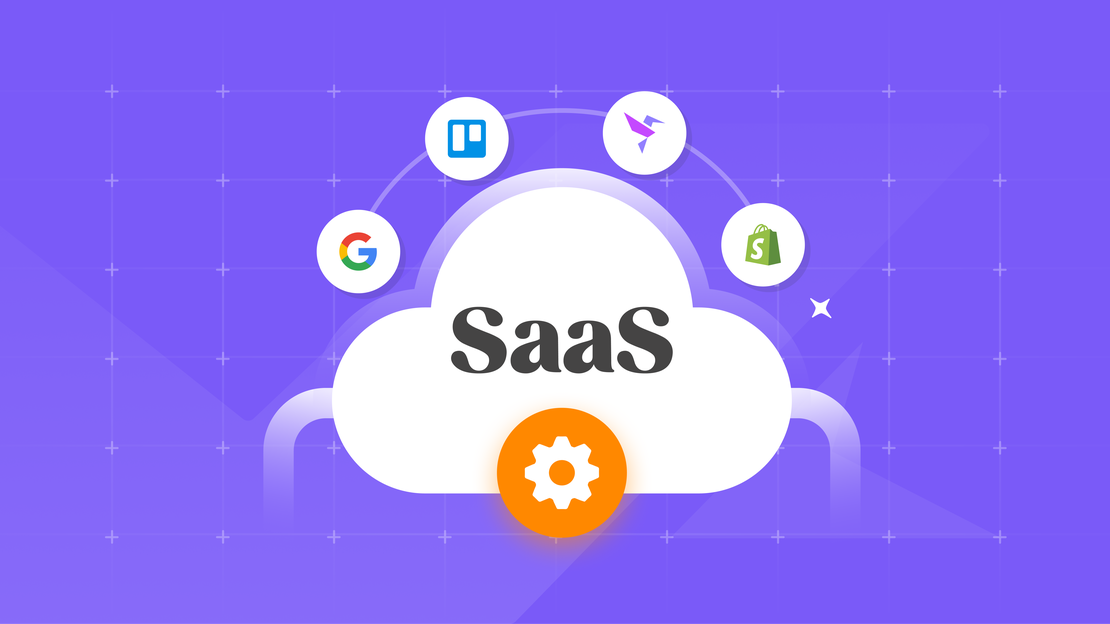SAAS (Software as a Service): What Is It + Benefits

Table Of Contents
What is SaaS or Software as a Service?
SaaS stands for Software as a Service. ‘As a service’ means you don’t need to buy or install software or storage yourself. Instead, you access it via the internet. A third party hosts and manages everything for you in the cloud.
In the past, software had to be purchased outright or as a pricey license, and installed manually on each computer or server. Today, all you need is an internet connection—you log in and start working. More and more companies are switching to SaaS, but not all of them just yet.
With SaaS, you always have access to the latest and most secure version of the software. And because it runs on a subscription or pay-as-you-go model, you only pay for what you actually use—making it a cost-effective choice for many.
What software can you use as SaaS?
There’s a huge range of programs available as SaaS—whatever your task or type of organization, there’s likely a tool for it. Some examples:
- CRM and customer management: FlowQi CRM
- Text, notes, and collaboration: FlowQi Docs, Google Workspace
- Project and task management: FlowQi Project Management, Trello
- Invoicing: FlowQi Invoicing
- Accounting: Moneybird
- Marketing and communication: FlowQi Marketing, HubSpot, Gmail
- Design and content creation: Canva, Adobe Creative Cloud
- E-commerce: WooCommerce, Shopify
- Video conferencing: Zoom, Google Meet
What is the difference between IaaS, PaaS, and SaaS?
In addition to the SaaS model, there are two other ways to work in the cloud: IaaS and PaaS. Below, we explain the key differences between these three cloud models:
1. IaaS – Infrastructure as a Service
With IaaS, you rent IT infrastructure such as servers, storage, networks, and virtual machines. You manage the operating system, applications, and data yourself. This means you don’t have to invest in physical hardware, but you’re still responsible for software and system management.
- IaaS is great for: developers, IT teams, or organizations that want full control over their systems.
- Examples: Amazon Web Services (AWS EC2), Microsoft Azure, Google Compute Engine.
2. PaaS – Platform as a Service
PaaS goes a step further: in addition to infrastructure, you get a ready-to-use platform to develop, test, and deploy applications. You don’t have to worry about managing servers, storage, or network infrastructure.
- PaaS is great for: developers who want to build and launch apps quickly without managing backend systems.
- Examples: Heroku, Google App Engine, Microsoft Azure App Services.
3. SaaS – Software as a Service
With SaaS, you use complete software applications via the internet. Everything—hosting, maintenance, updates—is handled by the provider, so you can simply log in and start working.
- SaaS is great for: freelancers, teams, and organizations (from SMEs to governments and NGOs) that want easy access to tools like email, accounting, and CRM.
- Examples: FlowQi, Google Workspace, Dropbox, Salesforce, Canva.
Pros and cons of SaaS
Cons of SaaS tools
SaaS isn’t always the perfect fit. If you need something highly customized, a PaaS (Platform as a Service) model might offer more flexibility. Another limitation is that most SaaS tools require an internet connection—although some offer limited offline functionality. So if your internet is unreliable, SaaS might be less suitable.
Pros of SaaS tools
One of the biggest advantages of SaaS is convenience. You don’t need to install anything, worry about updates, or manage servers. As long as you have an internet connection, you can work from anywhere. This makes SaaS perfect for remote teams, freelancers, and digital nomads.
You also benefit from built-in support, security, and maintenance—all taken care of by the provider. SaaS tools are easy to scale, whether you need to add users or downgrade your plan. That flexibility makes them a great fit for solo entrepreneurs, growing businesses, non-profits, and large organizations alike.
Public, private and hybrid cloud
There are three main types of cloud computing:
- Public cloud: You share infrastructure with other users via the internet (like Google Drive or Microsoft 365). It’s affordable and easy to use, but offers less control.
- Private cloud: Dedicated to a single organization, offering more control, better security, and customization. Often used by governments or large enterprises.
- Hybrid cloud: A mix of both. You decide what runs in the public cloud and what stays private, combining flexibility with control.
What do SaaS tools like a CRM system cost?
One of the biggest advantages of SaaS is its pricing. A traditional CRM system can cost anywhere from $8,000 to $50,000. In contrast, many cloud-based CRM tools start at just $17 per user per month.
Prices can increase depending on the number of users, features, and any extra modules (like marketing automation or customer support). But there’s a suitable cloud-based CRM system for every business size and budget.
Our own SaaS CRM solution, for example, is designed for small to large businesses, self-employed professionals, NGOs, and even government organizations.
Try SaaS Software as a Service for free
Sign up for our BETA Program and try FlowQi CRM—plus all our other SaaS tools—for free.